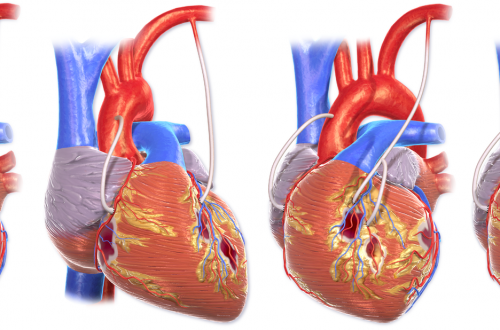Hypercalcemia
- Normal Ca in mg/dL: 8.4 – 10.2 (lab value from nbme.org)
- Normal Ca in mmol/L: 2.18 – 2.58 (lab value from mcc.ca)
Sample Case: A 40 year old man arrives in the clinic complaining of polyuria, constipation and malaise. He has normal vital signs and no significant findings on physical exam. On laboratory testing, his serum calcium is elevated at 11 mg/dL (2.74 mmol/L). What is the best next step in management?
First, you need to recognize that he has hypercalcemia. The most common cause of hypercalcemia in patients arriving in the clinic is primary hyperparathyroidism. To diagnose hyperparathyroidism, you first need to get the parathyroid hormone (PTH) level. Remember, elevated serum calcium is supposed to suppress PTH production. Therefore, finding high or even normal PTH suggests that this is not happening, which will point towards hyperparathyroidism as the cause of the hypercalcemia.
Correcting for albumin
For calcium in mg/dL: corrected Ca = measured total Ca + 0.8 x (4.5 – albumin). Normal albumin is 3.5-5.5 g/dL.
For calcium in mmol/L: corrected Ca = measured total Ca + 0.02 x (40 – albumin). Normal albumin is 35-40 g/L.
We need to correct for albumin, because about 40% of calcium in the serum is bound to proteins, with albumin being the most common. Another 10% of serum calcium is bound to anions, which leaves 50% of serum calcium in the active ionized state.
Sample Case: A 40 year old man with sarcoidosis comes to the clinic complaining of chronic constipation. He has used enemas and laxatives with success but the problem recurs. His labs are normal with the exception of an elevated serum calcium at 11 mg/dL (2.74 mmol/L). What is the next step in management? Explain the mechanism for his hypercalcemia.
This man has hypercalcemia due to Sarcoidosis, a multisystem granulmatous disease characterized by non-caseating granulomas. Hypercalcemia and hypercalciuria are commonly seen in patients with sarcoidosis.
The elevated serum calcium is a result of the granuloma formation in sarcoidosis. Within the granulomas are activated macrophages which produce 1- alpha hydroxylase, an enzyme which converts 25-hydroxy vitamin D to 1,25-dihydroxy vitamin D. The increased levels of 1,25-[OH]2 vitamin D result in increased absorption of calcium from the gut.
Hypercalcemia in sarcoidosis is managed with corticosteroids, which work by reducing the number of activated macrophages.
Note: Sarcoidosis is a multisytem disease that is not generally treated. When treatment is given, the mainstay therapy is corticosteroids such as prednisone. Corticosteroids are given when there are severe pulmonary symptoms, involvement of certain organ systems (eyes, CNS, heart) or when there is hypercalcemia.



